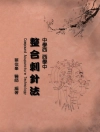This book illustrates the role of photoprotective and radioprotective metabolites from natural sources. Various classes of radioprotective metabolites derived from cyanobacteria, algae, fungi, bryophytes, pteridophytes, gymnosperms, and higher plants have been explained to reinforce the current knowledge in this field. In addition, the book elucidates the potential applications of these metabolites in pharmaceutics, cosmetics, and biomedical sciences that will help develop commercial products in modern anti-radiation therapeutics.
Topics such as stress tolerance environmental strategies, evolutionary tendency, and biosynthetic route of radioprotective compounds for cost-effective large-scale industrial production of the metabolites are also covered in the book. This book will add to the understanding of radioprotective mechanisms and curative measures for various deleterious diseases leading to cancer development. This volume also offers the latest insights into current and upcoming issues that arise from solar and atomic radiations and their amelioration by inherent radioprotective mechanisms of green plants.
This book benefits readers from academia, industry, colleges, and research students to better understand the impacts of various radiations and the development of radioprotective green compounds.
Mục lục
Chapter 1: Radiation biology: historical background, sources and complications.- Chapter 2: Algal radioprotective phytochemicals: Sources and potential applications.- Chapter 3: Bio-prospecting of photoprotective compounds in algae.- Chapter 4: Unraveling fungal radioprotectants and their applications.- Chapter 5: Recent advances in metabolomics and molecular genomics for the production of photoprotective compounds.- Chapter 6: Bioprospecting and evolutionary significance of radioprotectors in non-flowering lower plants.- Chapter 7: Radioprotective phytochemicals: diversity, efficacy, application and commercialization.- Chapter 8: Impacts of climate alterations in the biosynthesis of defensive natural products.- Chapter 9: Cancer therapeutics: mechanism of action, radiation toxicity and drug formulation.- Chapter 10: Role of nanotechnology in the development of radioprotective formulations.- Chapter 11: Radioprotective effects of nutraceuticals and food products.- Chapter 12: Bioprospecting of radioprotective compounds in bacterial community.- Chapter 13: Pharmacology of synthetic and natural radioprotactants: application and consequences in cancer therapeutics.- Chapter 14: Immunochemistry: consequences and mechanism of protection in chemotherapeutics.- Chapter 15: Radioprootective therapeutics: recent trends and future applications.
Giới thiệu về tác giả
Vinod K. Kannaujiya is currently working as an assistant professor in the Department of Botany, MMV, Banaras Hindu University, Varanasi, India.
Rajeshwar P. Sinha, DAAD Fellowship Awardee and Fellow, Society for Applied Biotechnology, India, is a professor of Molecular Biology, Centre of Advanced Study in Botany, Banaras Hindu University (BHU), Varanasi, India.
Md. Akhlaqur Rahman has completed his DPhil in Biotechnology from the University of Allahabad, Prayagraj, India. He is presently working as an assistant professor in the Department of Biotechnology, SS Khanna Girls’ Degree College, Prayagraj, India.
Shanthy Sundaram has completed her Ph D in Microbiology from the Department of Microbiology, Barkatullah University, Bhopal, India. She is presently working as a professor and coordinator, Centre of Biotechnology, University of Allahabad, India.












